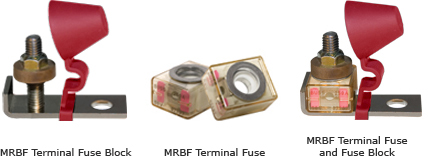The paper references the ABYC standards for the placement of circuit protection in the DC main circuit (ABYC E-11). The basic rule seems to be the "7 inch rule" with certain exceptions. In particular:
They further state:If the conductor is connected directly to a battery and is contained throughout its entire distance in a sheath or enclosure
such as a conduit, junction box, control box, or enclosed panel, the overcurrent protection shall be placed as close as
practicable to the battery, but not to exceed 72 inches (1.83m).
In any case, fuses, circuit breakers, and switches should not be installed in battery compartments because of the risk of
corrosion coupled with the potential presence of explosive gasses.
I would like to understand best practices for constructing a battery box to hold 4 golf cart batteries in series/paralell (12 volt system) and provide main circut protection for this house bank. (The starting battery is seperate). It would seem nearly impossible to mount a circut breaker outside of the battery box and keep the length of the wire to the battery less than seven inches.
Also why does the ABYC permit the lenght to increase when conduit is used?
